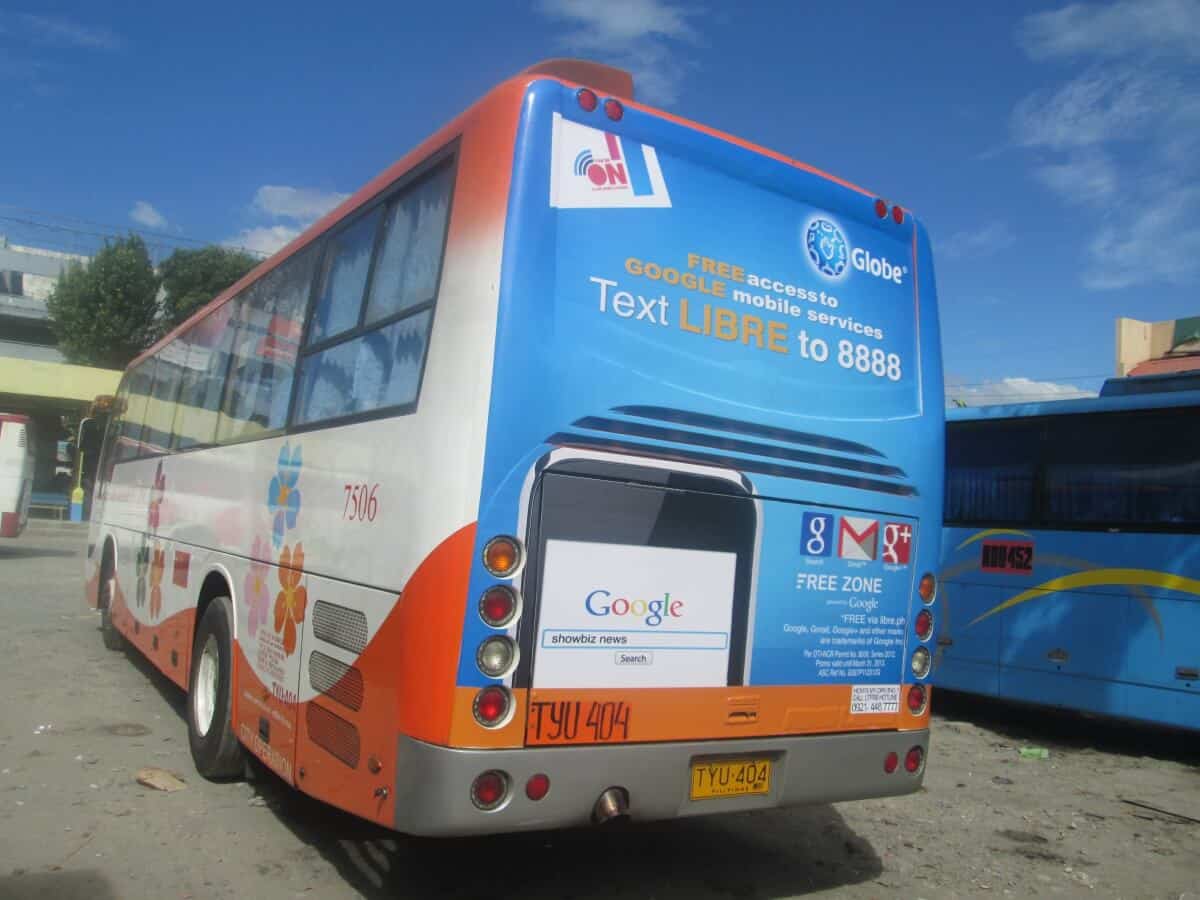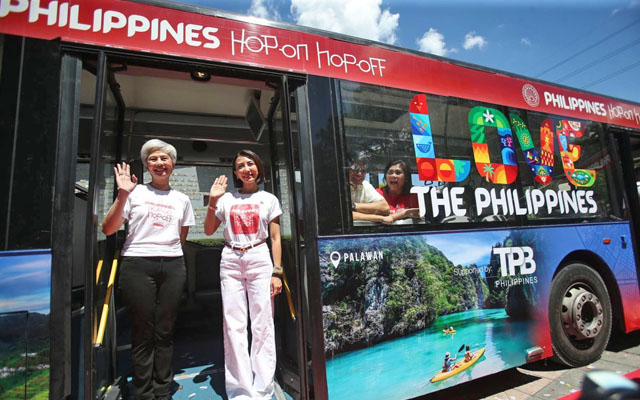Transit Advertising Philippines: Reach Thousands of Travelers Daily
Transit Advertising Philippines: Reach Thousands of Travelers Daily
Blog Article
Recognizing the Role of Transportation Advertising And Marketing in Enhancing Brand Name Presence and Customer Involvement
Transportation advertising has become a pivotal aspect in the advertising and marketing landscape, providing one-of-a-kind opportunities for brands to raise their presence and engage customers properly. With the ability to get to a varied and captive target market during their daily commutes, these advertising and marketing approaches are not merely regarding exposure; they are concerning creating meaningful connections with prospective consumers. As we discover the multifaceted benefits and ingenious strategies within transit marketing, it ends up being vital to think about just how these elements jointly affect customer perception and habits, elevating questions regarding their long-term effect on brand name commitment.
Meaning of Transportation Advertising
Transportation marketing describes the technique of promoting products, solutions, or brand names via ads placed in and around public transport systems. This kind of advertising includes a variety of positionings, including posters on buses and trains, electronic screens at transit terminals, and wraps on the exterior of vehicles. It intends to get to a varied audience, taking advantage of on the high foot web traffic connected with public transit.
Transportation advertising and marketing is purposefully placed to catch the interest of commuters, who commonly invest substantial time taking a trip or waiting. By incorporating advertisements into the daily regimens of individuals, brands can develop a long-term perception and foster brand name recognition. The tool is especially reliable in metropolitan environments, where public transport is a primary setting of traveling.
Furthermore, transit advertising can promote localized targeting, allowing services to reach certain demographics based on transit paths and terminal locations. As metropolitan populaces grow and making use of public transportation increases, this marketing method has gotten prominence as a crucial component of integrated advertising and marketing techniques. The vibrant nature of transportation marketing, integrated with its capability to involve consumers in a captive setting, emphasizes its significance in contemporary marketing practices.
Advantages of Transportation Advertising
The effectiveness of transit marketing exists in its ability to provide a plethora of benefits to brands seeking to improve exposure and involvement. One of the main advantages is the substantial reach it supplies; transportation advertisements can effectively target diverse demographics across metropolitan locations, getting to both travelers and pedestrians alike. This wide direct exposure substantially enhances brand name recognition.
Another advantage is the high frequency of impressions. As transit cars travel along well established paths and quit at several places, they produce repeated direct exposure that strengthens brand messages. This frequency fosters knowledge, which is important in consumer decision-making.
Transit advertising is also cost-effective contrasted to various other media platforms. Provided its expansive reach and potential for high impressions, brand names commonly experience a lower price per thousand impacts (CPM), optimizing their marketing budget.
In addition, transportation ads can create a feeling of neighborhood connection. By straightening with neighborhood transit systems, brand names can reverberate with local target markets and promote a sense of neighborhood pride. This localized strategy improves brand name loyalty and involvement, making transportation marketing an engaging option for businesses intending to solidify their visibility out there.

Reliable Techniques for Transit Projects
To optimize the effect of transportation campaigns, brand names ought to utilize tactical preparation and execution customized to their target audience. Initially, identifying the market characteristics of the audience utilizing public transportation is important. This permits brands to develop personalized messaging that resonates with prospective consumers.
Next, picking the appropriate transportation tools is essential. Whether making use of bus wraps, train posters, or digital screens, each medium has one-of-a-kind advantages that can improve presence. For example, lively visuals on bus covers can attract interest, while electronic advertisements can be updated often click this to mirror timely promotions.
In addition, integrating a cohesive branding technique throughout transit platforms guarantees uniformity and reinforces the brand name's identity. Utilizing captivating designs and memorable taglines will certainly reinforce brand recall amongst travelers.
Finally, timing is an essential consider executing successful transit projects. Launching projects throughout peak travel hours or local events can significantly enhance exposure and interaction. By utilizing these methods, brand names can properly harness the possibility of transportation advertising and marketing, cultivating better understanding and link with their target market. Eventually, a well-executed transit campaign can drive substantial growth in brand visibility and consumer engagement.

Measuring Impact and Involvement
In examining the efficiency of transportation marketing campaign, accurate dimension of effect and engagement is essential for brand names looking for to enhance their marketing approaches. Metrics such as reach, frequency, and impressions give foundational data to assess presence. Assessing these variables assists identify the number of possible consumers are subjected to the ads during their daily commutes.
Involvement can be more determined via consumer communications, such as internet site web traffic, social media sites states, and straight reactions to calls-to-action featured in the advertisements. Using tools like QR codes or one-of-a-kind URLs can promote tracking of customer habits directly linked to transportation projects. Studies and feedback devices also function as useful techniques to gather qualitative data on customer understandings and recall of the ad.
In addition, advanced analytics and acknowledgment designs can correlate transportation direct exposure with succeeding buying actions, using insights right into the return on investment. By employing a comprehensive technique that combines quantitative and qualitative procedures, brands can develop a nuanced understanding of their transportation marketing influence. Ultimately, this data-driven technique enables brands to refine their projects, guaranteeing they reverberate effectively with target audiences and improve general Continued brand exposure.
Study of Effective Campaigns
Successful transit ad campaign function as compelling instances of just how reliable approaches can boost brand name exposure and interaction. Transit Advertising Philippines. One significant instance is the "I Love New york city" campaign, which changed the city's image and attracted countless travelers. By utilizing subway advertisements, signboards, and bus wraps, the campaign developed a solid, cohesive brand name identification, leading to a considerable uptick in tourism and neighborhood service patronage
One more exemplary project is Coca-Cola's "Share a Coke" effort, which leveraged transit advertising and marketing to individualize the brand name experience. By featuring popular names on advertising products across various transportation platforms, Coca-Cola fostered a much deeper psychological link with customers, urging them to share their experiences on social media sites.
Furthermore, the "Got Milk?" campaign efficiently utilized public transportation advertisements to get to a broad audience, reinforcing the message of the relevance of milk in a well balanced diet regimen. The campaign saw a measurable boost in milk intake in target demographics.
These study highlight that when carried out attentively, transportation advertising can considerably enhance brand presence, foster customer interaction, and drive measurable results, showing its vital function in modern advertising and marketing methods. - Transit Advertising Philippines
Conclusion
To conclude, transportation marketing acts as an important device for improving brand name visibility and fostering customer interaction. By making use of tactically positioned advertisements within mass transit systems, brand names can successfully reach diverse target markets and reinforce recognition via consistent exposure. The execution of targeted messaging and cutting-edge methods better enhances the effect of transportation projects. Inevitably, the capacity to measure engagement and evaluate effective study underscores the effectiveness of transit marketing in driving brand loyalty and consumer interactions.
Transportation advertising and marketing has actually arised as a critical element in the marketing landscape, offering unique possibilities for brand names to raise their exposure and engage customers reference successfully.Furthermore, transit advertising and marketing can promote local targeting, enabling businesses to get to certain demographics based on transit routes and terminal areas.In examining the efficiency of transit marketing campaigns, exact dimension of impact and engagement is essential for brand names looking for to enhance their marketing strategies.Effective transit advertising and marketing projects serve as engaging examples of just how efficient techniques can boost brand visibility and involvement.In verdict, transportation advertising offers as an important tool for boosting brand presence and promoting consumer involvement.
Report this page